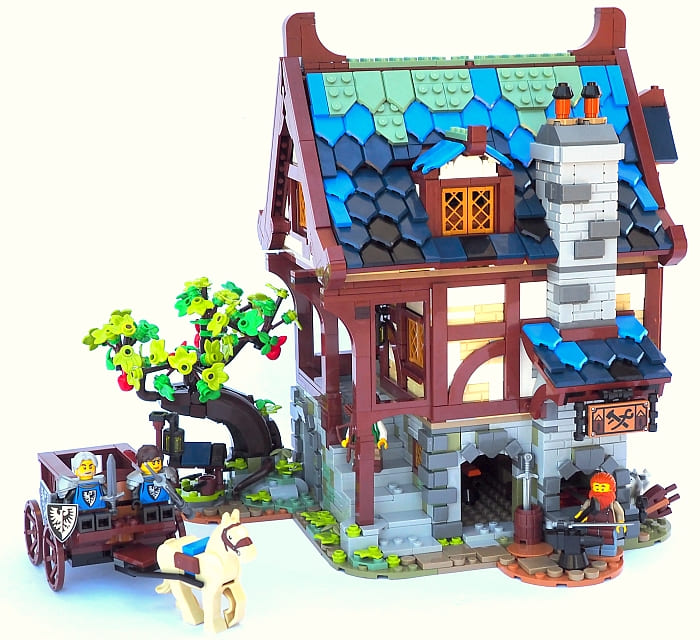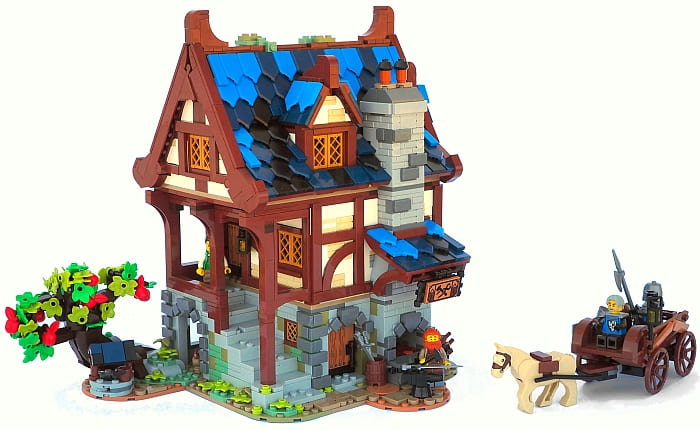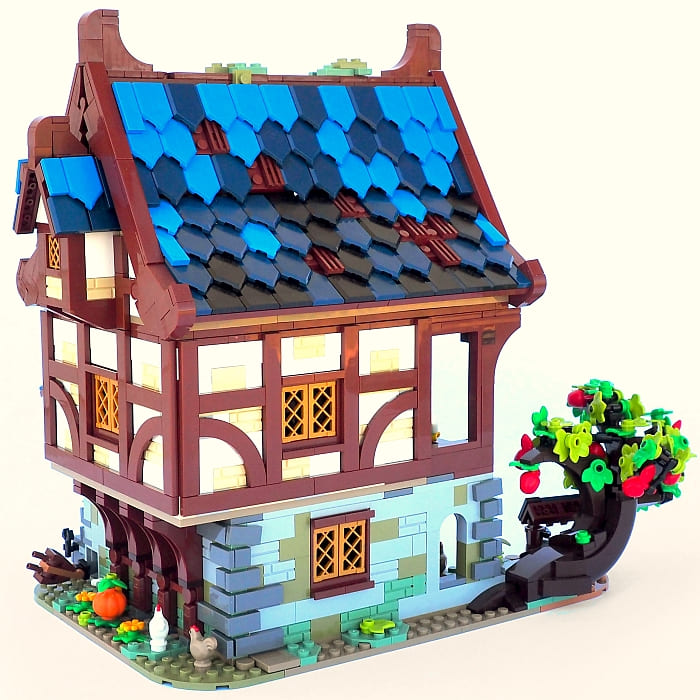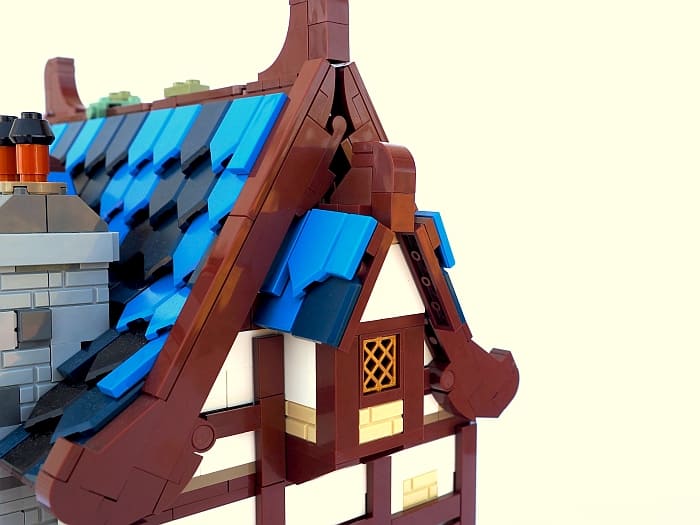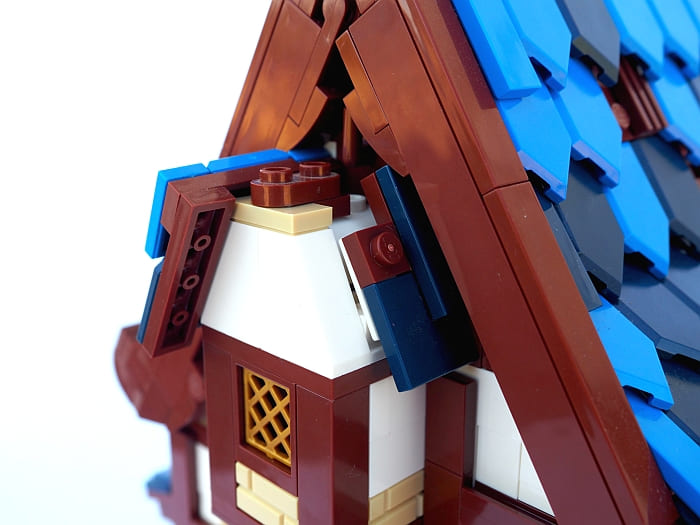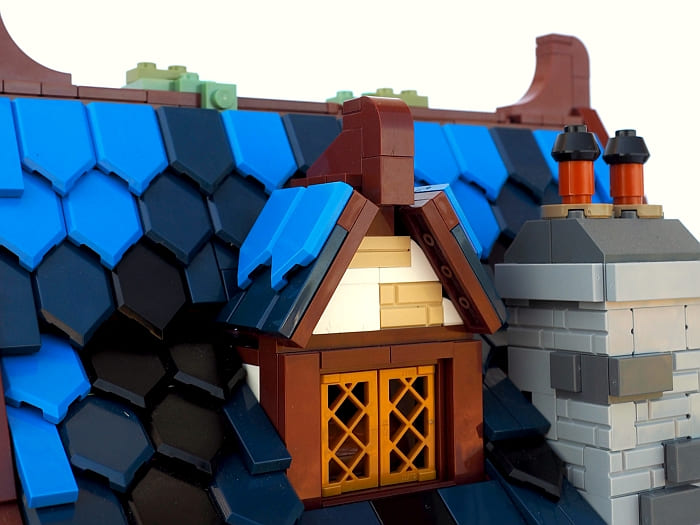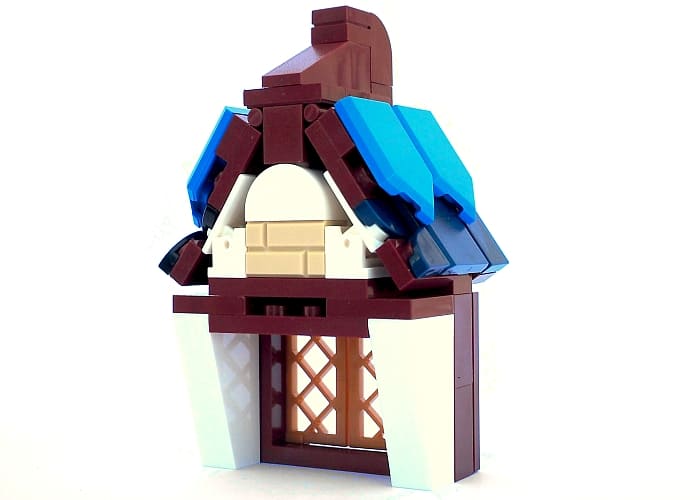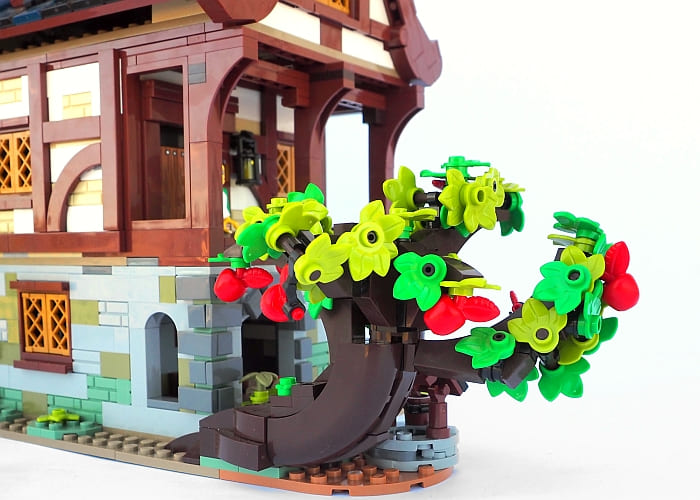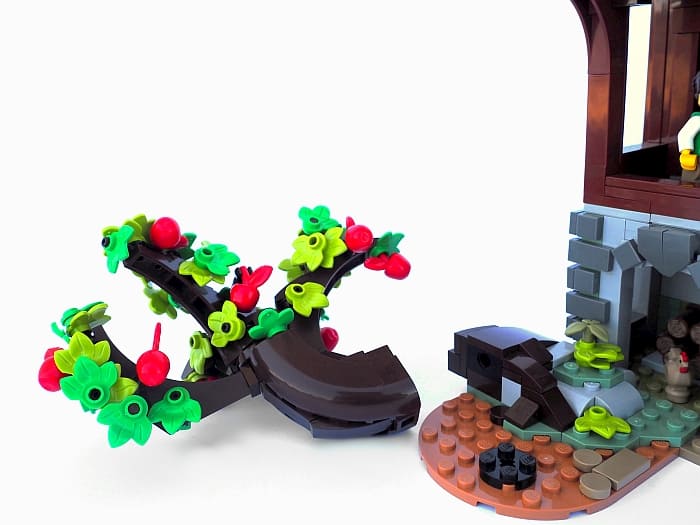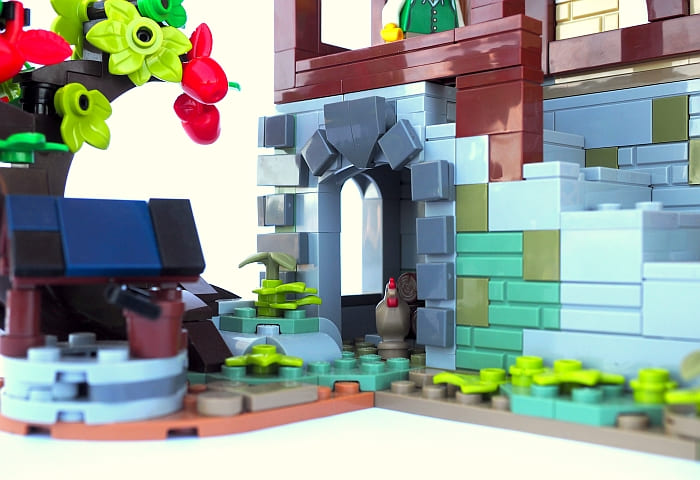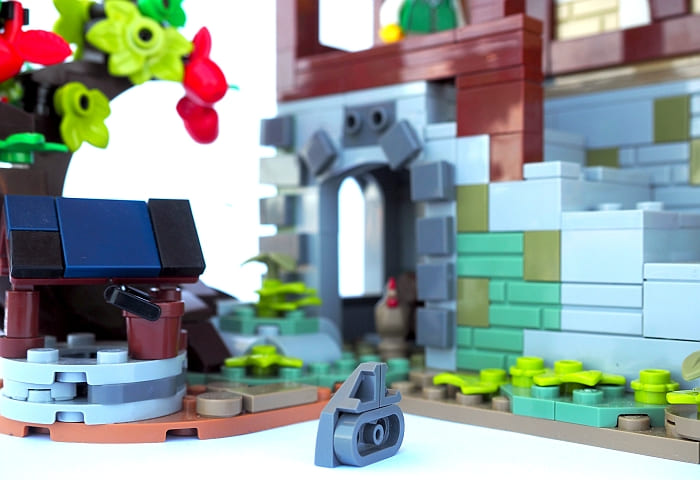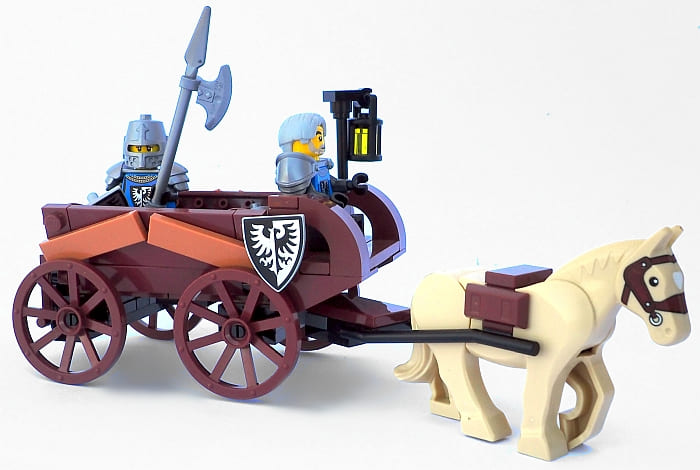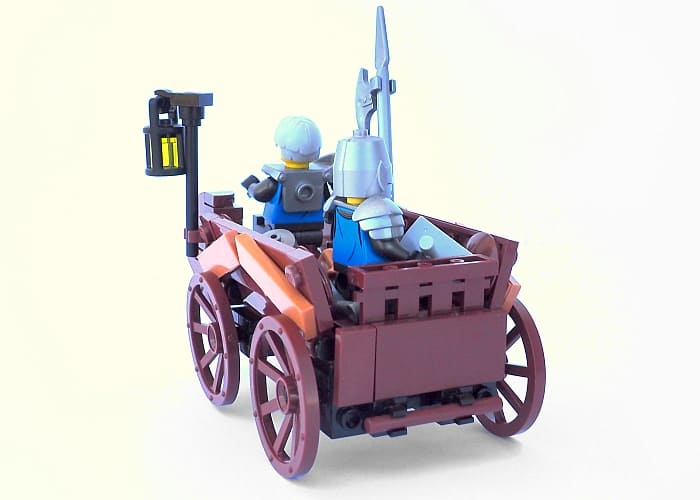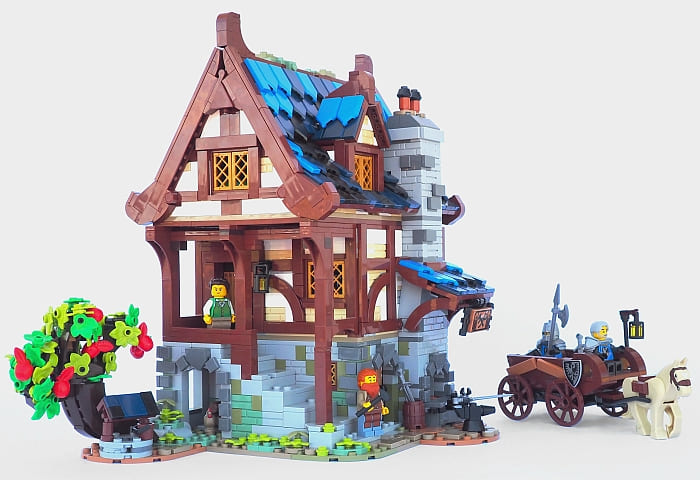Although the LEGO Ninjago theme is most popular with younger LEGO fans, #70620 LEGO Ninjago City – released in 2017 – captured the adult LEGO fan community as well. Ninjago City is similar to the LEGO Modular Buildings in size and complexity, but with an Asian flair. In fact, many LEGO fans mix Ninjago City with their standard Modular Buildings to add a bit of visual interest. Those who have space for a very large city, even create a separate Asian neighborhood.
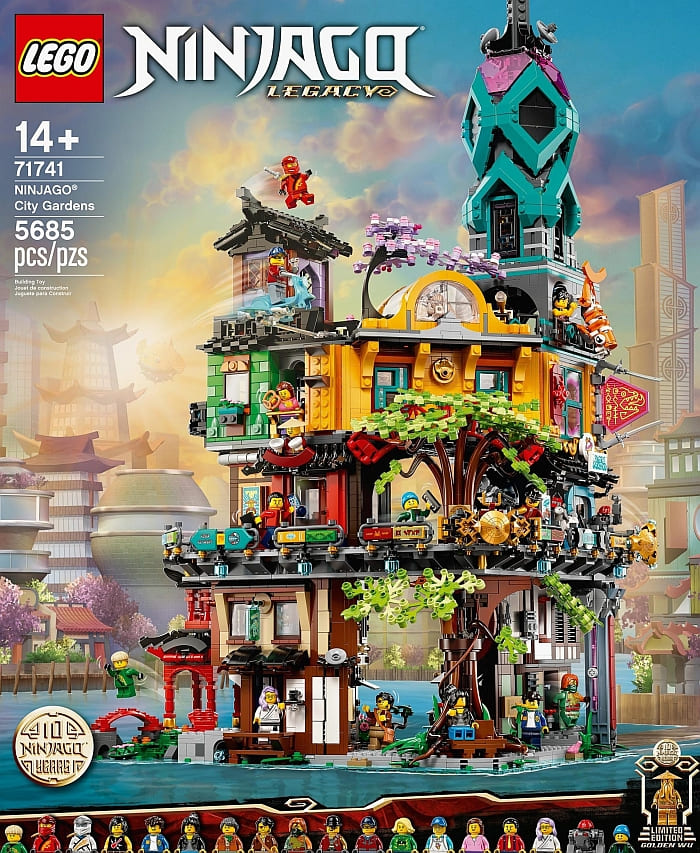
The original LEGO Ninjago City set was so popular that a year later (2018) LEGO added an extension; #70657 LEGO Ninjago City Docks. This set isn’t as tall and flashy as Ninjago City, but it has its own charm with small shops and residences, an attractive Asian marketplace, and docks for loading and unloading cargo. Although some LEGO fans skipped this second set saying it’s not as interesting as the first one, I personally really like it. It looks attractive from both front and back, and it has a nice balance to be displayed by itself. And of course, it also works as a perfect add-on to Ninjago City.
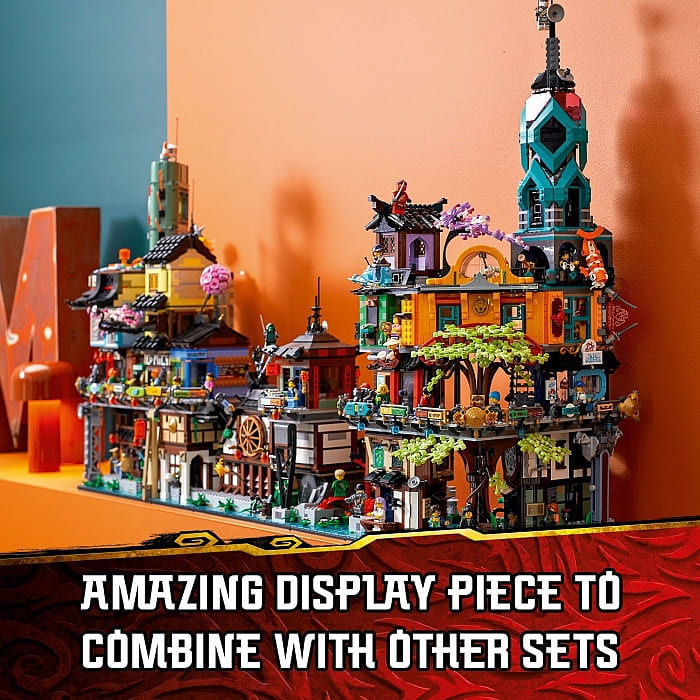
Both of these sets are now retired, which means they cannot be purchased from LEGO directly (but are still available on the secondary market). So it came as a bit of a surprise when this year LEGO released a third set in the collection; #71741 LEGO Ninjago City Gardens. Today, we will explore this new set in detail.
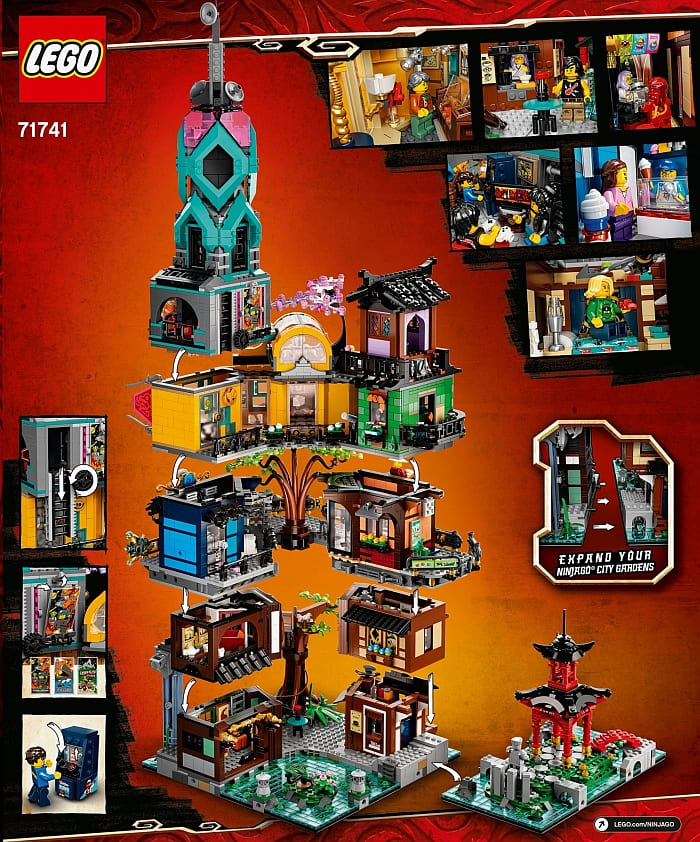
Before we begin, I thought to mention that I normally build large sets like this in the company of others. I invite friends over and we have a building party. Sadly, with the pandemic still going on, that’s not possible, so I built Ninjago City Gardens along with JANGBRiCKS’ live stream building the same set. If you like to build in the company of others, I highly recommend tuning in to live streams. Many LEGO reviewers with YouTube and Twitch channels will build live, allowing their viewers to build along with them while chitchatting. It’s the next best thing to building with others in person. Although it’s now technically not live, you can still build the set along with JANG’s videos. He built the set in two sessions both over nine hours long. Here are the links: Live Build – Part 1 and Live Build – Part 2.
LEGO NINJAGO CITY GARDENS – THE BASIC STATS
To begin our review, let’s make some basic comparisons. The #70620 LEGO Ninjago City set measures around 24 inches high to the top of its tallest tower and it’s built on a standard 32×32 stud (10×10 inch) baseplate. It comes with 4,867 pieces, 18 minifigs (counting the ninja suit mannequins), and the original price was $300. It was meant to be a corner building with two highly detailed facades and a simpler backside with a waterway and elevator.
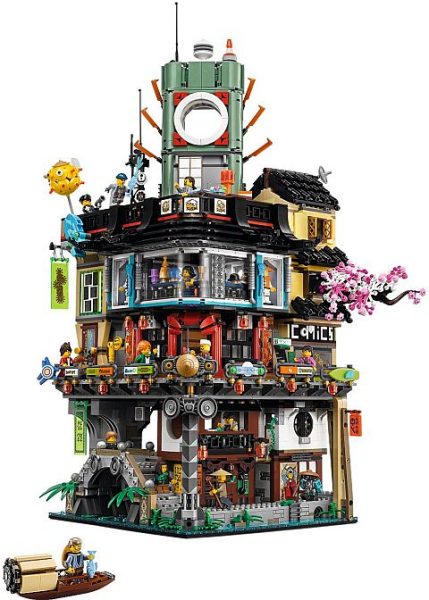
The #70657 LEGO Ninjago City Docks set measures around 14 inches high at its tallest point and is spread out on permanently connected 32×32 stud and 16×32 stud baseplates. It comes with 3,553 pieces, 13 minifigs, and the original price was $230.

The #71741 LEGO Ninjago City Gardens set is right about 29 inches to the tip of its tower, and is thus the tallest in the collection. It is a corner building on a standard 32×32 stud baseplate, but it also has a separate extension with Zane’s memorial temple island on a 16×32 baseplate. This modular layout allows several different display options; you can place the garden on either side of the corner structure, you can skip the garden altogether, or – if you have the other two sets – you can display the garden in another position amongst the buildings. I like LEGO’s suggested layout with the two corner sets separated by Ninjago City Docks in the middle. But some people prefer to place the two corner buildings next to each other and place the docks and the gardens behind them.
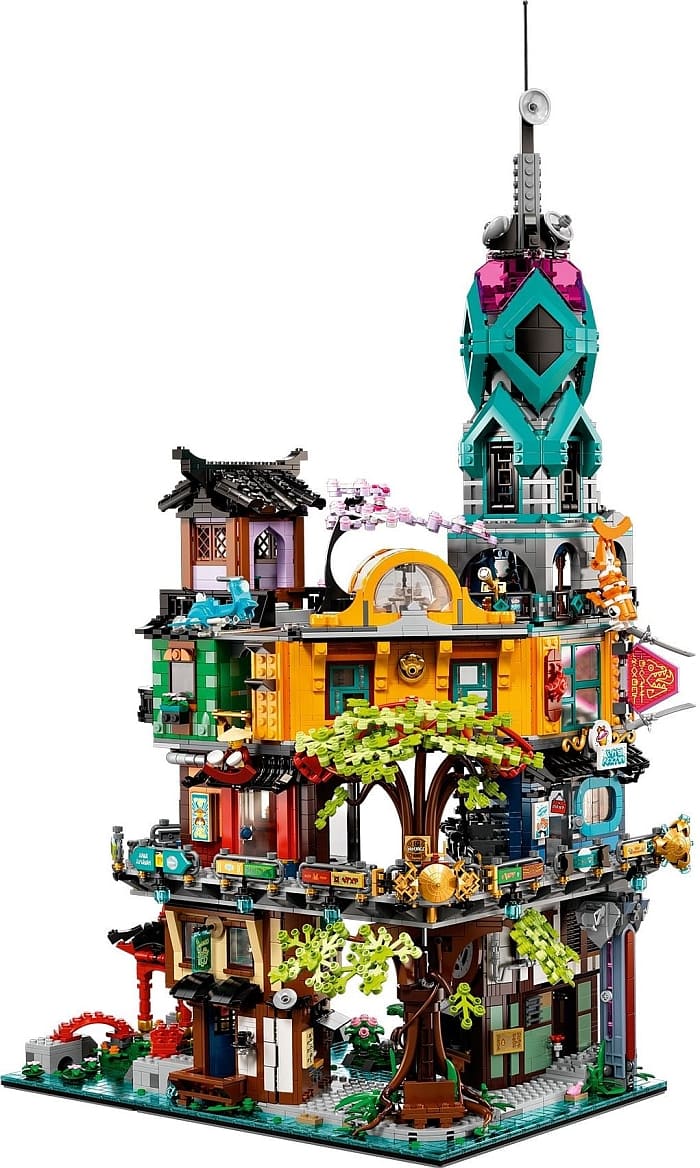
The bottom line is that you have plenty of options depending on your preferences and the space you have available. Ninjago City Gardens comes with 5,685 pieces, so it’s also the largest set by volume. You get 21 minifigs (including the special golden 10th anniversary Sensei Wu and Zane’s statue). The original price is $300, which is remarkably low (only 5.3 cents per piece) and is the best-priced set in the collection (the other two had very fair prices too).
LEGO NINJAGO CITY GARDENS – THE BOX & CONTENT
The set comes in an enormous box with an inner box to separate the parts for more stability. The box art is attractive front and back, as well as the sides. The front of the box features the street side of Ninjago City Gardens. You will notice right away that this set is just as attractive from the back as the front and could be displayed either way. The back of the box shows the modularity of the set and all the different little shops and dwellings that make up the whole complex. The sides of the box feature all the minifigs with their names as well as the measurements of the set.
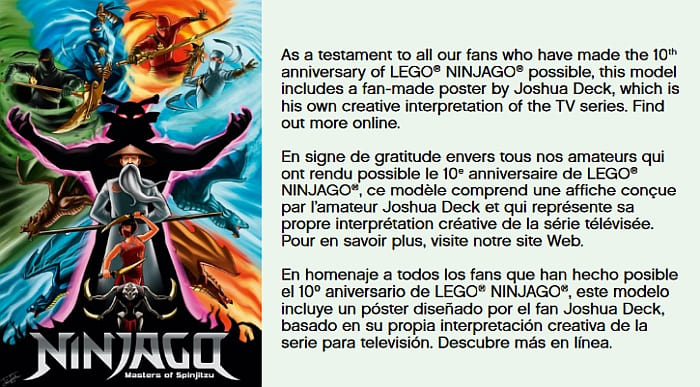
Just like the original Ninjago City set, Ninjago City Gardens comes with three large instruction books. These, and three sticker sheets, are packed in protective shrink-wrap. As a surprise, a fan-designed Ninjago Poster is also included. The poster is about 6.5 x 10 inches, so not very big, but it’s a nice addition to celebrate the 10th anniversary of the theme.
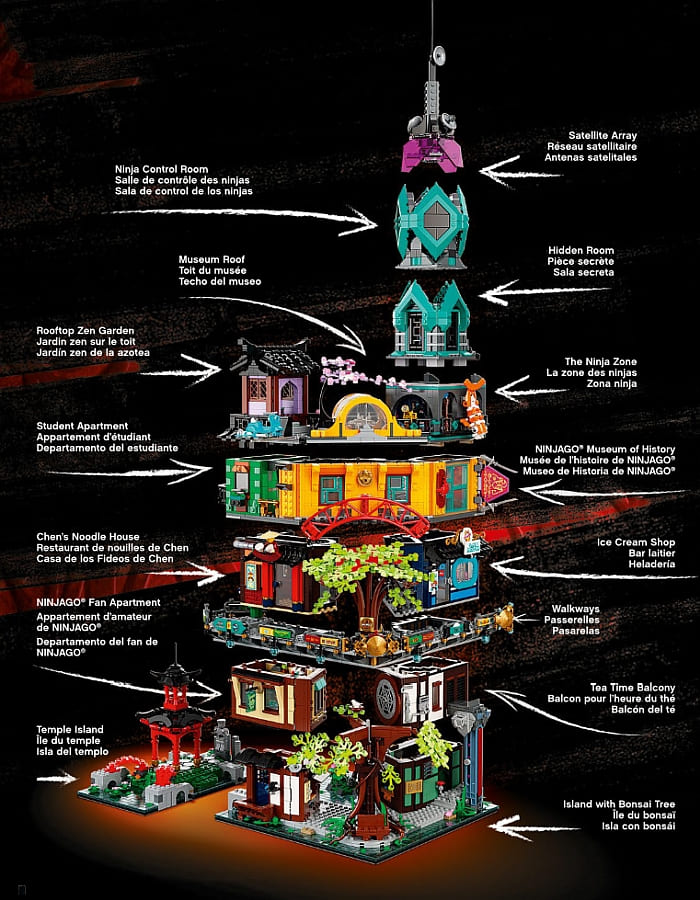
Inside the first instruction book, there is a Ninjago language translator to translate the signage on the stickers, which is a fun additional activity you can enjoy while building. My favorite feature of the original Ninjago City set instructions was all the concept art and other inspirational artwork. Even now, I regularly refer to them for ideas. Sadly, the instructions for neither Ninjago City Docks nor Ninjago City Gardens include this feature.
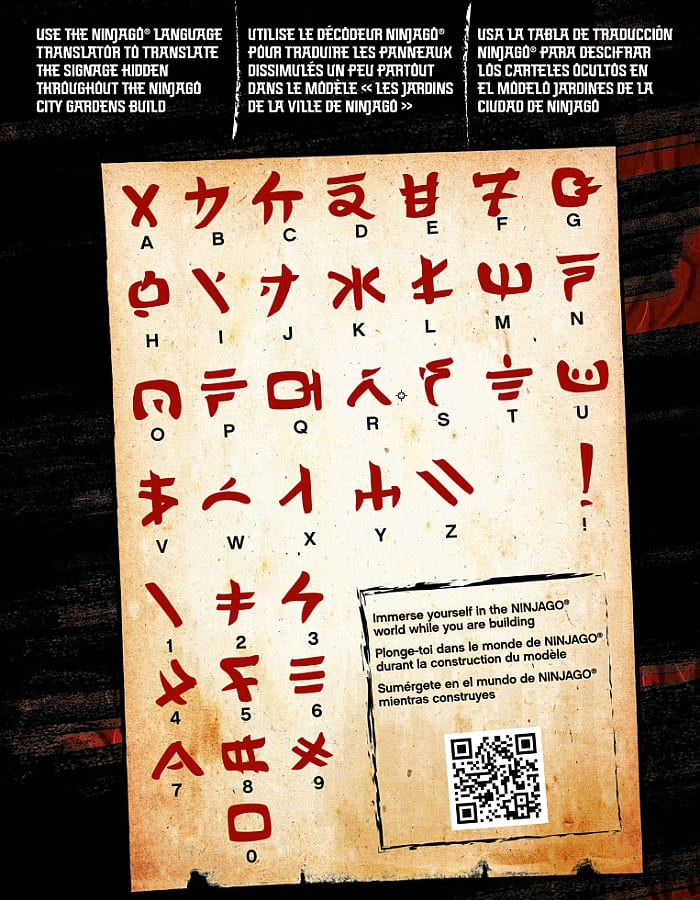
The three sticker sheets include 66 stickers to decorate both the outside and inside of the buildings. The images are fun and offer lots of references to Ninjago’s history. Two of the sticker sheets are on white background, and one of them is on a clear background.

LEGO NINJAGO CITY GARDENS – INSTRUCTION BOOK #1
The first instruction book is for building the base as well as the first level of buildings. If you built the other two Ninjago City sets, you know how much detail LEGO designers put into the base. The water is beautifully layered giving the illusion of varying depth with plants both below and above water level. Although building all that landscaping may sound tedious, it really isn’t. There is enough variety and enough interesting building techniques to keep your attention. The landscaping is built from bags 1-5, along with the base of the tree, and the special golden 10th-anniversary Sensei Wu statue. I should mention that the 2×2 round tile at the statue’s base is printed, and you get a second identical piece later in the build.
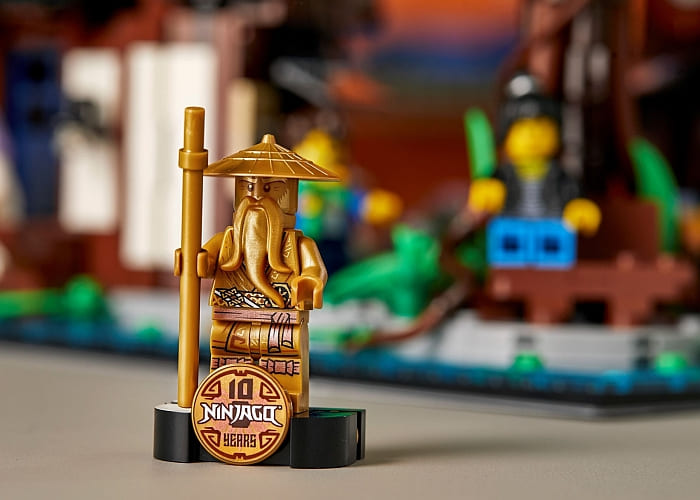
Once the base is done, it’s time to move on to the buildings from bags 6-10. The base of the tree, along with two two-story buildings on either side of the tree support the third-story walkway. The two buildings are trapezoid-shaped with two adjacent right angles and one angled short side. This was done to accommodate the alleyway between the buildings that open up to the pond and gardens behind the buildings. It’s an interesting building technique for sure, but it comes at a price. The angled side of the buildings are not very useful and thus wasting a lot of interior space.

The two buildings both have removable second floors, and they are also easily removable from the base with a bit of hiding space below them. When looking at the set from the front, the building on your left is designated as a Ninjago fan apartment, with a tiny kitchen on the first floor, and a tiny bedroom on the second floor. This second floor doesn’t have a door from the outside, so you can only access the interior if you remove the next layer above. The building on the right is a two-story tea house. This building is a bit more accessible as some of the walls are open at the back.
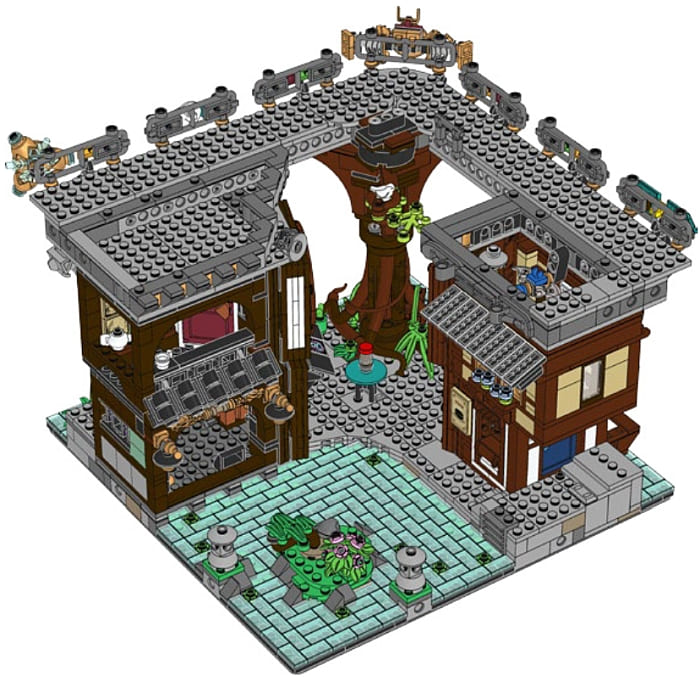
Next, we build the third-story walkway, which lines up seamlessly with the walkway of the original LEGO Ninjago City set. You will be building similar railings and lanterns as in the previous set (the lanterns are light-blue instead of orange). Attached to the walkway is the floor of the buildings on the third floor. This whole layer becomes one removable piece anchored on the trunk of the tree and a few studs on the two buildings. Removing this layer is fairly easy, but reattaching it is kind of a pain.

A LEGO Technic axle coming through the trunk of the tree has to be aligned with a hole at the bottom of the third story layer, and this takes quite a bit of juggling (while knocking down several pieces). I have done it a few times for this review, and I don’t think I ever want to do it again. The difficulty of this step, as well as the fact that the interior of the buildings are so tiny and most of the doors open towards the inside basically makes the interiors of the two bottom buildings inaccessible. This is one of the major faults of this set, which, unfortunately, will carry on to the upper levels as well.
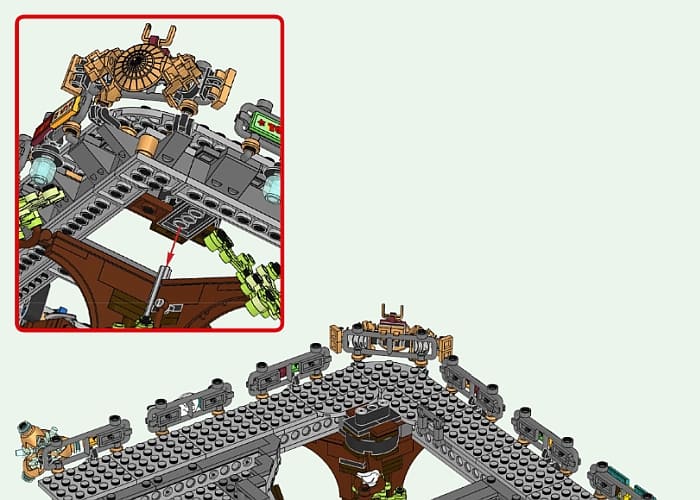
LEGO NINJAGO CITY GARDENS – INSTRUCTION BOOK #2
The third story features Chen’s Noodle House on the left, and an ice cream shop on the right built from bags 11-12. The angled side of the noodle shop can swing open for easier access, which is how all the other buildings should have been handled in my opinion. The ice cream shop is cute, but again, tiny. There is a staircase next to the ice cream shop leading up to the fourth story. Honestly, by this point, I was getting a little frustrated with these tiny and impractical trapezoid buildings.

Fortunately, it was time to move on to the next section, level four, built from bags 13-16. This level sits further back from the street with a tiny student apartment on the left (green building), and the Ninjago Museum of History taking up the rest of the space. This entire section is very colorful with tons of interesting building techniques and references to Ninjago’s history.
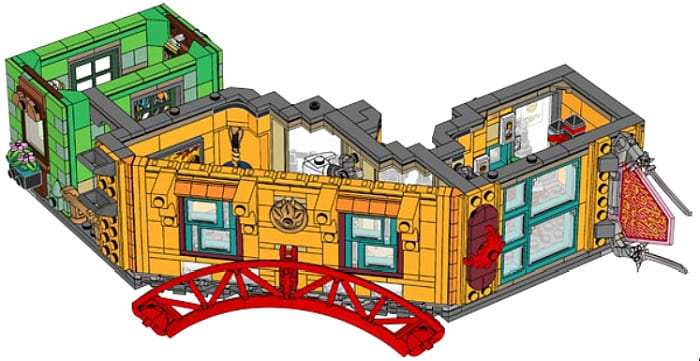
I like the student apartment with its bright-green walls, flowers planted in upside down minifig skirt pieces, and cleverly built telescope. Although the museum is quite long with a central wing and a right-side wing, it is very narrow on the inside due to the unusual angles established on the lower floors. I like the bright-light orange walls though and the teal-framed windows. The center wall of the museum (with the red arch) is built as a separate section that slides into place. This does give better access to the inside of the museum when removing the floor above it, but it also makes the entire level flimsy, when you pick it up to access the level below. Overall, I did enjoy building this level, but it does carry the problems the lower levels experienced; issues with weird angles, tiny spaces, and trouble with connecting the floor to the level below it.
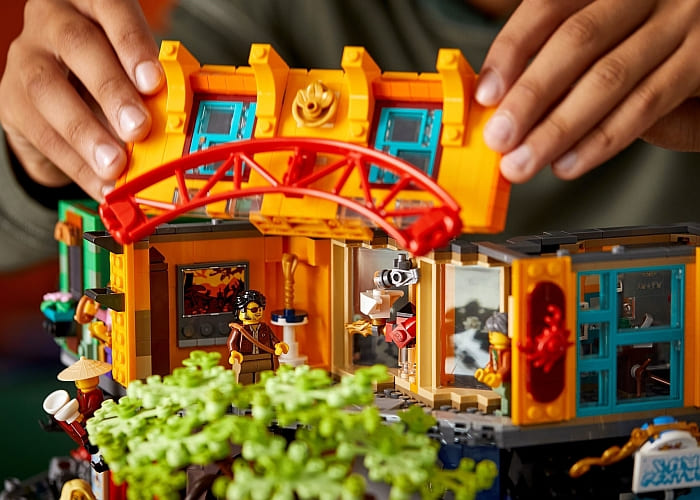
LEGO NINJAGO CITY GARDENS – INSTRUCTION BOOK #3
The fifth floor is split into three separate sections. The rooftop Zen garden on the left (lavender color building), and the base of the highest tower are built from bags 17-18. The Zen garden has nice colors, but it’s another tiny space that can’t be used for much. (Interestingly, there is a little safe below this building, which was a fun build.) The roof is also an interesting build made with treasure chest lids in black.
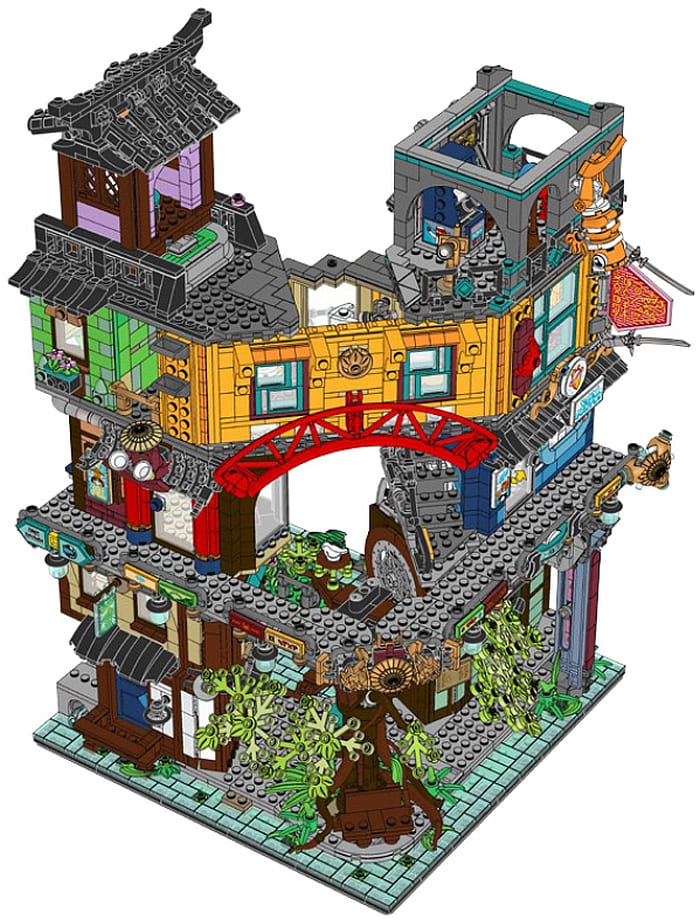
The base of the tower is the most practically sized space in the whole set, it has the only two active play-features, and the most fun decoration (the orange and white lionfish). It’s a 10×13 rectangle called Ninja Zone with open arches on three sides for easy access by minifigs and big people like us. Here is where young ninjas hang out to play games.

The moving screen (a printed 1×2 plate) of the arcade is one of the active play features, and the other is the ladder operated by a LEGO Technic gear to move up and down.

I also like the translucent-dark-pink highlights next to the removable/interchangeable sign next to the ladder. The small balcony has a second telescope using different building techniques than the one a level below.
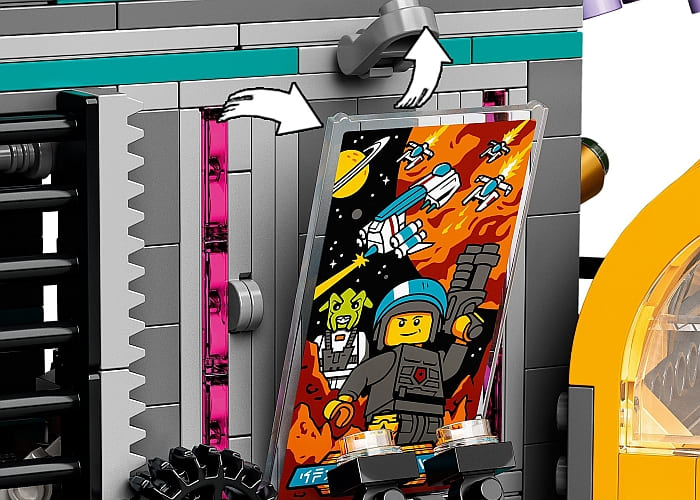
Bags 19-22 contain parts to build the two upper levels of the tall tower, the rounded glass roof of the museum, the upper section of the tree, and two small balconies. The lower level of the tower is supposed to be a hidden room and the upper one the ninja control room. They are completely impractical tiny spaces for a single minifig, but they include tons of interesting pieces and building techniques.
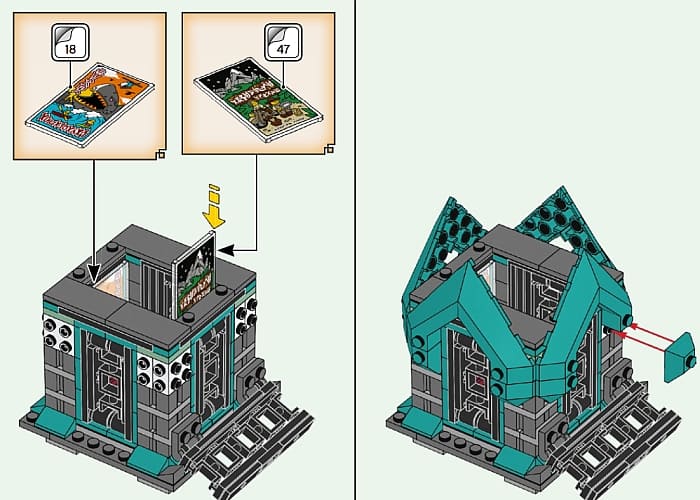
The rounded glass roof of the museum is another interesting section. It features an awesome dragon skeleton suspended from the ceiling and there is a little cherry tree shading the roof. I should point out that all the transparent glass looking pieces in this set use a new type of plastic LEGO recently started experimenting with. They have a different feel than older window pieces and they don’t look as crystal clear. I don’t think that they look as nice as older transparent parts, but they are still better than the clear pieces made by other brands.
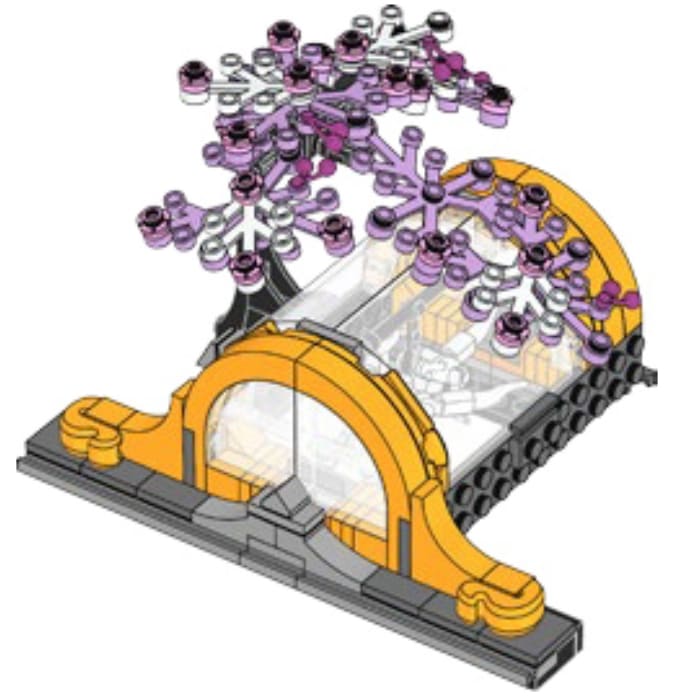
The upper section of the large tree is nicely shaped with six curved branches and clusters of leaves. Both the large green tree and the small cherry tree look lovely and add some organic shapes and colors for visual interest.

One of the small balconies finishes off the left side of the third-story walkway and the other one is added to the side of the green student apartment. They hang over the edge of the 32×32 baseplate and are attached with LEGO Technic pins. This allows even more customization options, as you can easily remove the balconies if you want to push the set flat against a wall or other building.

LEGO NINJAGO CITY GARDENS – TEMPLE ISLAND
At this point, we are done building the main structure, but there is more! We still have to build the temple island from bags 23-26 on a separate 16×32 baseplate. This little temple is kind of lost on promotional images next to the huge building complex, but it ended up becoming one of my favorite sections of the entire set.
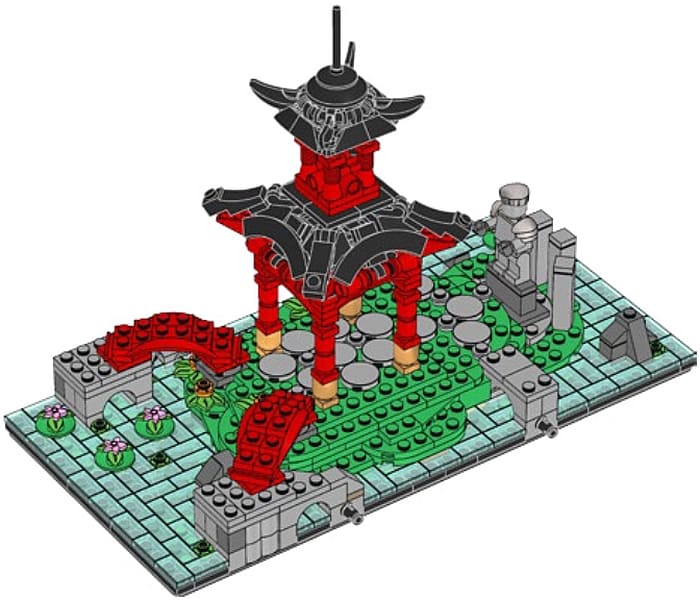
First, we go back to building landscaping using similar techniques as in the main part of the set. I love the water lilies (or maybe they are lotus flowers?) and the rock formations. Two red bridges lead up to the small temple that contains a footpath to Zane’s statue. The whole layout is just lovely. And even though this set has an incredible variety of clever roof techniques using everything from hotdogs to game controllers to treasure chest lids, the roof techniques for the temple were my absolute favorite.

LEGO NINJAGO CITY GARDENS – THE TECHNIQUES
Speaking of building techniques, this entire set is full of incredibly clever ways to build things. The roofs are just one example. There are many other details that bring together pieces in ways I have never seen before. This is definitely a major highlight of the set.
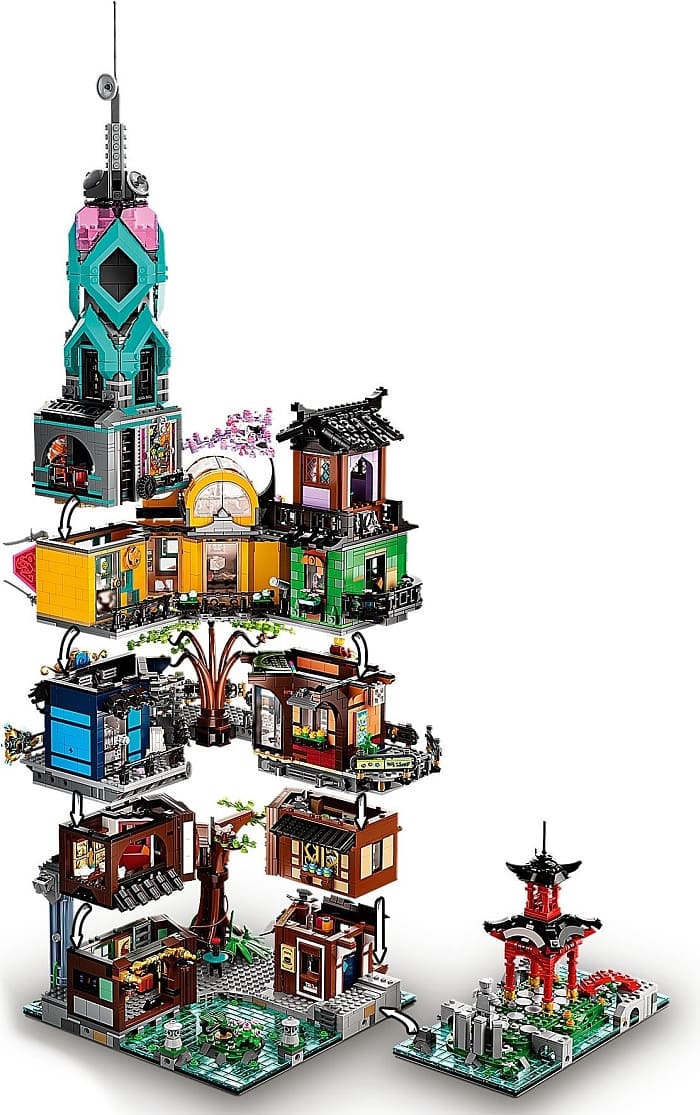
Another highlight is the use of colors, which is a building technique in itself. From the three Ninjago City sets, this is the brightest, and even though there is a great variety of strong colors, they blend together perfectly. It’s really a pleasure to look at the whole mix.
Yet another technique is being able to reference so much of Ninjago’s history. Some of this is done with stickers, while others are tiny builds displayed in the museum and other spaces around the complex. They may look like meaningless decorations for those who are not familiar with the lore, but they mean a lot to Ninjago fans. It would have been a good idea to reference these in the building instructions for the uninitiated so they can appreciate them better.
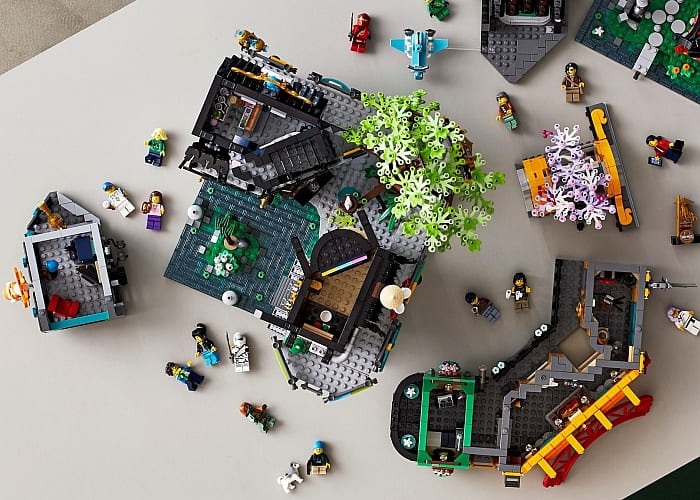
While this set is nice, bright, and impressive on the outside, I’m still disappointed that the majority of interior spaces are almost completely useless. The original Ninjago City set and Ninjago City Docks both feature stackable small sections, but the buildings are at least 8×10, 10×10, or even larger rectangles. All the spaces can accommodate several minifigs, and they are easy to stack, remove, and re-stack. In other words, they are all functional spaces for play and for posing minifigs. Unfortunately, this is not the case with Ninjago City Gardens. Several of the lower spaces are inaccessible when the set is fully assembled, and even the ones that are more accessible on the upper levels, they are so tiny you can hardly fit a single minifig inside. You can pose minifigs in the open spaces like the gardens at the back, the third-story walkway, and the balconies, but everything else is frustratingly cramped and hard to reach. Ninjago City Gardens is not on par with the other two sets in this regard.
LEGO NINJAGO CITY GARDENS – THE MINIFIGS
I did not mention this above, but with almost all bags you build one minifig with 21 minifigs (plus a droid) in total. This includes the special golden 10th-anniversary Sensei Wu statue and Zane’s statue behind the temple. The other minifigs are Zane and Kai in ninja attire, Cole, Jay, and Nya in urban attire, Misako, young Lloyd, Ronin, Clutch Powers, and several urban characters; Tito, Kaito, Hai, Eileen, Mei, Christina, Cece, and a guy named The Mechanic. There is also Chen, a minifig who is used as a sign for Chen’s Noodle House, but can also work as a regular character.

And we also get Jay’s full ninja attire hiding in the tower, which can be used as a regular minifig if you add a standard head (his head is just a plain translucent piece). And we can’t forget Scoop, the brick-built droid. I think the minifig selection is great with a good mix of ninja and regular folks. It would have been nice if Cole and Nya also have their ninja version to complete the team, but it’s not too hard to get them from other sets. Hai, the ice cream guy’s torso print is delightful!
LEGO NINJAGO CITY GARDENS – THE PARTS
As I mentioned above, the price per piece of this set is excellent. If you are looking for large quantities of useful pieces in nice colors, and interesting pieces, it’s worth getting Ninjago City Gardens just for the parts. I particularly like the teal window frames, bright-green bricks, tiles, and sword accessories (used as plants), medium-azure and dark-azure bricks and other pieces, bright-light-orange bricks, two different shades of green leaves in soft shades, and the various transparent elements. There is so much here to build up your parts collection!
LEGO NINJAGO CITY GARDENS – VIDEO REVIEW
To give you another opinion, I’m also including JANGBRiCKS full review below. He will walk you through the set and show you all of its features in detail.
In summary, I would say that even with its faults, #71741 LEGO Ninjago City Gardens is a wonderful set. It looks incredible either by itself or added to the other two Ninjago City sets. And there is never a dull moment while building it. Just prepare for the fact that this is going to be a very long build. I believe it took me about a week building in the evenings. I prefer shorter 2-4 hour building sessions as I’m fresher and can appreciate (and remember!) the building techniques better. And even if you prefer building your own models, the parts alone are worth getting the set for. If you want to check it out, it’s available at the LEGO Ninjago section of the Online LEGO Shop.
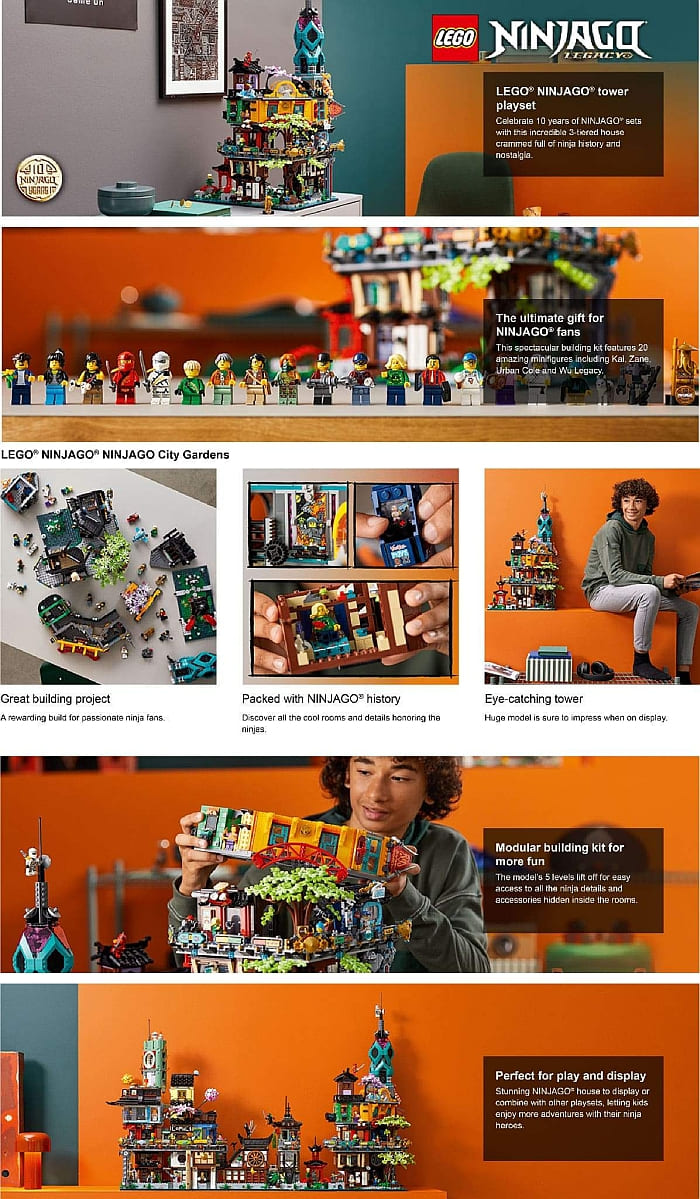
What do you think? How do you like Ninjago City Gardens? Are you planning to get it? Or do you have it already? And do you have the other two Ninjago City sets? Feel free to share your thoughts and own reviews in the comment section below!
And you might also like to check out the following related posts:
